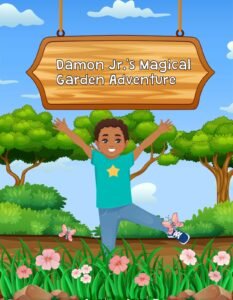Children’s books hold a special place in literature, enchanting young minds with captivating stories and vibrant illustrations. Illustrations play a crucial role in bringing these stories to life, making the reading experience immersive and memorable.
Children’s book illustration styles serve as the vivid brushstrokes that paint the landscapes of imagination, transforming ordinary narratives into extraordinary adventures. From classic illustrations with their timeless elegance to the whimsical charm of cartoonish depictions, each style adds a unique dimension.
The canvas of children’s literature is vast, encompassing minimalist designs that captivate through simplicity, digital artistry that embraces technological innovation, and collage techniques that bring tales to life with tactile beauty.
H2: Classic Illustration:
Classic illustration styles have a timeless charm that harks back to traditional art techniques. Often characterized by detailed and realistic drawings, classic illustrations are known for their intricate linework and meticulous attention to detail. Artists employing this style often use mediums such as pen and ink, watercolors, or colored pencils. Classic illustrations can be found in many beloved children’s classics like “Alice’s Adventures in Wonderland” or “The Tale of Peter Rabbit.”
H2: Whimsical and Cartoonish:
Whimsical and cartoonish illustrations are characterized by exaggerated features, bold colors, and a playful aesthetic. This style is particularly popular in picture books aimed at younger children.
The characters may have oversized eyes, vibrant expressions, and imaginative settings that transport young readers to fantastical worlds. Dr. Seuss’s books, such as “The Cat in the Hat,” exemplify this whimsical and cartoonish style.
H2: Minimalist Illustration:
Minimalist illustration focuses on simplicity and the use of basic shapes and colors. This style often relies on negative space and clean lines to convey the essence of the story. Minimalist illustrations can be found in books that aim to evoke a sense of calm and clarity, allowing young readers to focus on the narrative. “Press Here” by Hervé Tullet is a prime example of how minimalist illustrations can engage children through interactive storytelling.
H2: Digital Illustration:
With advancements in technology, many illustrators have embraced digital tools to create vibrant and dynamic illustrations. Digital illustration allows for versatility in style, from realistic renderings to more stylized and contemporary designs. Artists use graphic tablets and software like Adobe Illustrator or Procreate to craft visually stunning and modern illustrations. The “Diary of a Wimpy Kid” series by Jeff Kinney features digital illustrations that complement the contemporary tone of the stories.
H2: Collage Art:
Collage art involves the arrangement of various materials, such as paper, fabric, and photographs, to create visually striking illustrations. This style adds a tactile and multidimensional aspect to children’s books, encouraging a sensory experience.
The use of different textures and patterns in collage illustrations can captivate young readers and enhance their engagement with the story. “The Very Hungry Caterpillar” by Eric Carle is a classic example of the charm of collage art in children’s literature.
H2: Watercolor and Mixed Media:
Watercolor illustrations have a soft and ethereal quality that appeals to many children’s book illustrators. The blending of colors and the fluidity of watercolor create a dreamlike atmosphere, making these illustrations visually enchanting. Artists often combine watercolor with other media, such as colored pencils or pastels, to add depth and texture. “Where the Wild Things Are” by Maurice Sendak showcases the expressive and emotive power of watercolor and mixed media in storytelling.
H2: Realistic Illustration:
Realistic illustration aims to depict characters and scenes with a high degree of accuracy, resembling photographs or detailed paintings. This style is often employed in non-fiction children’s books or stories that require a more true-to-life representation. Realistic illustrations can provide young readers with a clear understanding of the subject matter, making educational books visually engaging. “Owen & Mzee: The True Story of a Remarkable Friendship” by Isabella Hatkoff features realistic illustrations that accompany the true story of an unusual friendship between a hippopotamus and a tortoise.
H4: Conclusion:
Children’s book illustration styles are as diverse as the stories they bring to life. From the classic and timeless to the modern and digital, each style adds a unique flavor to the world of children’s literature. The magic lies not only in the words on the pages but also in the enchanting illustrations that capture the imagination of young readers. Whether through whimsical cartoons, minimalist designs, or realistic depictions, children’s book illustrators continue to shape the visual landscape of storytelling, leaving an indelible mark on the hearts and minds of generations to come.
